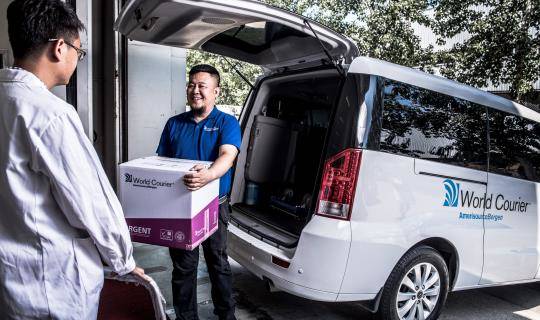Article: Four Trends in Advanced Therapy Logistics and Their Impact on Customs Clearance
By World Courier
Advanced therapies are a truly global industry. Over the last 12 months, World Courier alone have collected starting material and/or delivered these therapies to over 2,000 clinical sites in more than 50 countries. This globalization means that the management of these shipments through customs is becoming an increasing requirement for therapy developers.
At the recent Phacilitate: Leaders Europe event I was invited to chair a session where the MHRA[1], HMRC[2] and a security consultant discussed the challenges involved in the logistics of these advanced therapies from their viewpoint and gave advice on how to expedite customs clearance. The primary message from this discussion was to plan in advance and have all paperwork ready before any shipment starts.
To scope the challenges therapy developers are facing currently in relation to international shipments, we completed market research with the Phacilitate team and uncovered four key trends in specialty logistics today:
1. Growing volumes of shipments
An increase in consignments is being driven by the growing number of companies, therapies and target indications for advanced therapies. World Courier has been managing these shipments for over 13 years and has undoubtedly seen a steady increase in critical shipments for these therapies over this time.
2. Growing distribution
Early advanced therapies focused on orphan indications which helped to power funding and reimbursement strategies, as well as support their speed to market. However for advanced therapy developers this has meant having to globalize faster than many other industries to access the relevant patient populations.
3. Evolving destinations
North America and Western Europe are the primary import and export locations for these therapies currently. However, in recent years there has also been a growth in Northern Europe as well as an increased interest in Japan, China and South America. The research also shows further indications that companies are looking to develop manufacturing within the Middle East, Asia-Pacific and South America, which is likely to be based on the fact that, over the next 5 years, an increasing number of patients will be targeted in similar locations.
4. Evolving temperatures
The two biggest shipping temperatures currently utilized in advanced therapy logistics are cryo (-190°C) and refrigerated (2-8°C). However it is forecast that there will be a strong shift towards -80°C and cryo in the near future. This trend towards colder temperatures is likely being driven by the need to extend the shelf life of these solutions to enable the operationalization of commercial scale supply chains.

Advice from customs, as well as regulatory and security agencies is that paperwork is key. Ensuring the security of these therapies across international borders requires the right authorizations, otherwise officials cannot release the shipments. It is therefore critical to work with a logistics partner who understands the individual requirements for the international transportation of live cells into different countries, who can therefore support developers in connecting their therapies to patients.
[1] MHRA - The Medicines and Healthcare products Regulatory Agency regulates
medicines, medical devices and blood components for transfusion in the UK
[2] HM Revenue & Customs





